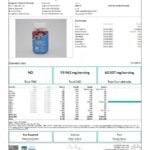
How Long Does It Take to Grow Weed
Growing weed, also known as cannabis, is a rewarding endeavor that has gained popularity for both economic and personal reasons. Cultivating cannabis at home allows individuals to have control over the quality and variety of cannabis products they consume. Understanding the timeline for growing weed is essential to plan effectively, manage expectations, and ultimately achieve a successful harvest.
This post is intended as information and for general knowledge only. It is not a substitute for medical advice, diagnosis, or treatment. It is recommended that you talk to a healthcare professional about this before introducing cannabinoids into your daily routine (especially if you have been diagnosed with any medical conditions or are under any medication). It is not recommended to drive or operate any machinery when using cannabis- or hemp-derived products. Use responsibly!
Germination Stage
The germination stage marks the beginning of the cannabis plant’s life cycle. During this phase, a cannabis seed starts to sprout and develop into a seedling. Several factors influence the germination time, including seed quality, moisture levels, temperature, and light exposure.
To germinate cannabis seeds, growers have several methods to choose from, such as the paper towel method, direct planting, or using starter cubes. The typical duration for seeds to germinate varies but usually takes 24 to 72 hours, with some seeds potentially taking up to 10 days to show signs of life.
Vegetative Stage
The vegetative stage is a crucial period for cannabis plant development, focusing on robust leaf and stem growth. The duration of this phase can vary depending on factors such as strain genetics, light duration, nutrient levels, and plant training techniques.
Promoting healthy vegetative growth requires providing the cannabis plant with sufficient light, typically 18 to 24 hours per day, balanced nutrients, and maintaining optimal environmental conditions. The vegetative stage generally lasts between 3 to 16 weeks, depending on the strain and desired plant size.
Flowering Stage
The flowering stage is a significant phase in cannabis cultivation as it marks the onset of bud production and influences the potency of the final product. The flowering period can vary based on whether the strain is photoperiod-dependent or autoflowering.
Photoperiod-dependent strains require a light cycle of 12 hours of light and 12 hours of darkness to induce flowering, while autoflowering strains will automatically transition to the flowering stage without being affected by light schedules. Adjusting nutrient ratios and monitoring humidity levels are crucial during this stage. Typically, the flowering stage lasts 6 to 12 weeks, though it can vary depending on the strain.
Harvesting and Curing
Choosing the right time to harvest cannabis is essential for achieving the desired effects and potency. Growers examine the trichomes and pistils to determine the ideal harvest window. Factors influencing the timing of the harvest include strain maturity, desired effects, and environmental conditions like temperature and humidity.
Proper harvesting, trimming, and curing techniques play a significant role in enhancing the quality of marijuana buds. Harvesting involves cutting the plant at the base and removing fan leaves, while curing the buds for 2 to 8 weeks helps develop their full aroma and smoothness.
Total Time from Seed to Harvest
The complete cannabis growth cycle encompasses the germination, vegetative, flowering, harvesting, and curing stages. Depending on the strain and cultivation method, the total time from seed to harvest can vary significantly.
Indica strains tend to have shorter growth cycles compared to sativa strains, while hybrid strains exhibit a mix of traits from both. Moreover, indoor growing can offer more control over the environment, potentially leading to faster harvest times compared to outdoor growing, which relies on natural conditions.
Growers can optimize the growing process to achieve faster or slower harvest times by adjusting environmental factors, selecting strains with specific growth characteristics, and implementing training techniques like cannabis plant training university.
Conclusion
The journey of growing weed from germination to harvest requires patience, attention to detail, and dedication. However, the personal satisfaction and economic benefits of cultivating cannabis at home make the process worthwhile for enthusiasts and medical cannabis users alike.
By understanding the various stages of cannabis growth and their respective durations, growers can plan effectively and manage their expectations. Whether growing for recreational or medical purposes, the knowledge gained from this article empowers readers to embark on their own marijuana cultivation journey responsibly and confidently.
Also Interesting:
How to Clean a Grinder: A Step by Step Guide
















